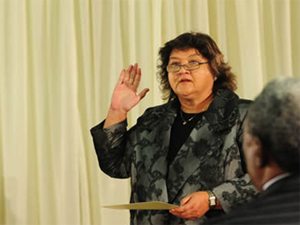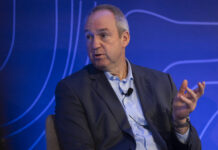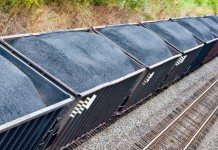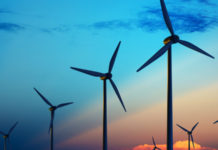
[miningmx.com] – ALREADY struggling with vaulting labour costs, South Africa’s mining sector faces another major cost increase.
This follows the full-year results from Eskom today which revealed a company sinking beneath the cost of debt – a situation it could only remedy with government subsidies, and increased electricity tariffs.
Eskom was awarded an 8% a year increase in tariffs effective in 2013 for four years which was half of the amount it requested, and which created a revenue shortfall of about R225bn. The company initiated a cost-saving drive, but its executives today all but pleaded for a higher tariff.
The company would increasingly struggle to service interest on its R254bn debt pile while the cost of capital for new projects would become virtually unaffordable were it to suffer another creidt downgrade. On June 18, Fitch affirmed Eskom’s credit rating but switched its outlook to negative while Standard & Poor’s put Eskom on a credit watch two days later.
Eskom CFO, Tsholofelo Molefe said another credit downgrade in the next 90 days would see the cost of money increase between 30% and 40%.
Adding to the sense of renewed crisis at Eskom, public enterprises minister, Lynne Brown, laid into the company’s performance, saying it had been below par in several respects such as generation output and its inability to keep its new build programme on track and within budget.
Eskom reported a profit of R7bn for the 2014 financial year, a R2bn improvement over 2013 which was largely accounted for by the gain in an embedded derivative which refers to changes in currency exchange.
Eskom has R110bn exposure to foreign currencies. When compared to the 2012 financial year, however, Eskom’s profitability is down about 40% from R12bn.
Molefe said that including the re-evaluation of assets – essentially the cost of replacing them – the company produced a loss of about R12.5bn which, in essence, shows that Eskom is unsustainable given its current revenue and cost profile, and its indebtedness.
They key metric Molefe used to highlight the stricken state of Eskom’s balance sheet was return on assets which, at a negative 0.53%, was “inadequate’ and that would “result in a further erosion of Eskom’s financial position’.
She said Eskom needed “a suit of solutions’ to resolve its liquidity problems, but the all-important factor was increasing the tariff so revenue was higher and more cash was pumped into the business. The rate of return on assets should equal the cost of capital, said Molefe, who added that Eskom’s cost of capital was currently 7,65%.
“It is therefore imperative that the price of electricity migrates to cost-reflectivity,’ she said. “Eskom requires a rate of return on assets that will enable it to maintain and replace the current asset base,’ she added.
The National Electricity Regulator of South Africa, or Nersa, which is responsible for setting the tariff increase, said it would make a decision by “the end of July” on power utility Eskom’s application to lift tariffs.
Another element in saving Eskom’s balance sheet was an equity injection from the government. Zola Tsoti, Eskom chairman, said that discussions with the National Treasury for subsidisation were fruitful, the support of which was being closely monitored by the credit rating agencies.
“It’s not all doom and gloom on the credit outlook,’ he said. “Basically, rating agencies are saying that they are looking for signals that indicate to them that “sovereign’ [Government] is there to support Eskom.
“This is what we are very busy with, talking to sovereign and engaging in fruitful conversations around how to mitigate this particular matter. I have to say that government has been extremely forthcoming at this juncture to the extent that we feel confident that we can turn around the impression of the rating agencies to uplift our rating as a company. I’m on the optimistic side in respect of that,’ said Tsotsi.
Brown, however, was withering of Eskom during parts of her maiden address as minister to which the utility reports.
Although Eskom had been set with a “mammoth task that had already put it on the back foot’, it had produced an “unsatisfactory performance’ in respect of generation and its new build programme. Eskom is adding about 8,800MW from two new projects alone: the R300bn Medupi and Kusile coal-fired power installations.
Said Brown: “We need to raise our game above the horizon and do something extraordinary as growth and investor confidence [for South Africa] and jobs depend on it’. She had instructed Eskom’s board to provide her with a report on its new projects “… and new timelines as a matter of urgency’.
She would also move to fill all outstanding executive positions as well as that of CEO. “The department [of public enterprises] and I will walk beside Eskom on this,’ she said.











